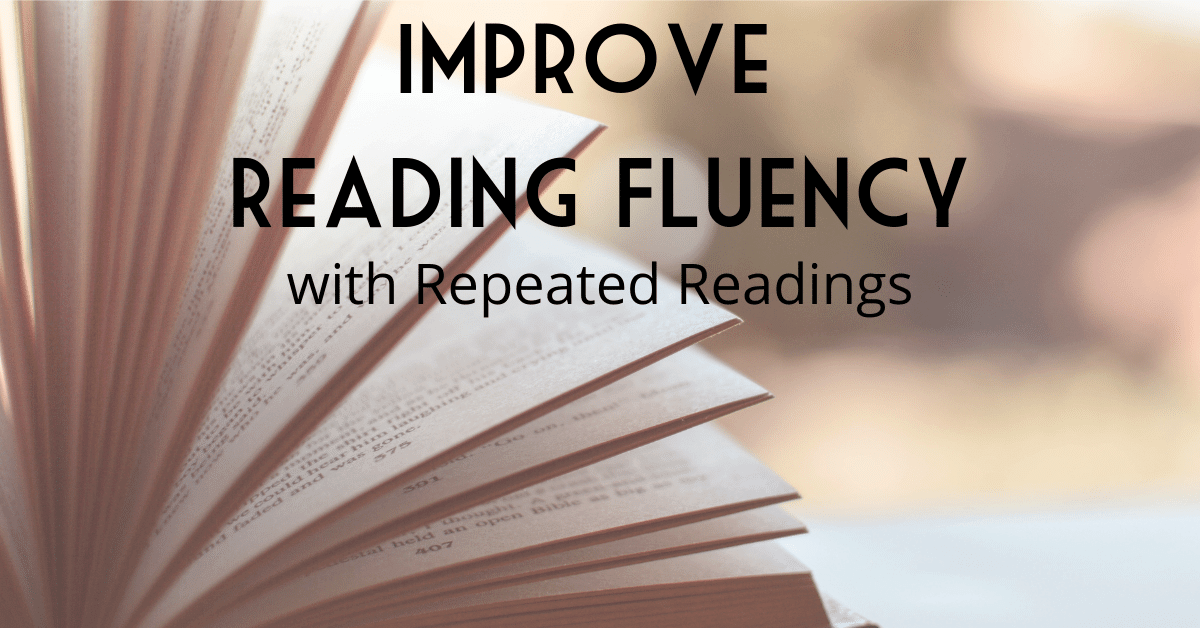
Reading Fluency is one of the five areas of reading. When I first started learning about reading fluency, the initial materials I found were assessments. My assessments gave me lots of useful information but on Monday when I started a new book with my reading group, my instruction looked very much the same as it had before. I quickly realized that assessing fluency was not enough to really help my kids. Luckily for me, I came across the book The Fluent Reader by Tim Rasinski and I gained a lot of practical knowledge to help me teach fluency.
Automaticity and Prosody
One piece of information from the book that impacted me was the understanding that fluency is really two separate entities: automaticity and prosody. Automaticity is where you work on students becoming automatic readers. The sight vocabulary becomes more automatic and there are fewer pauses. Students also become more proficient at strategies to figure out unknown words. These skills lead to quicker, smoother fluent reading. Automaticity helps to build better comprehension because students have the mental energy to think about the text as they read. Prosody is using the appropriate expression. When students are able to read a text using appropriate expression and observing punctuation, it greatly increases their ability to understand and have a deeper comprehension of a text.
A Strategy to Improve Reading Fluency
If your main fluency goal for your students is to improve automaticity, then this is the blog post for you. Today I want to talk about one very effective strategy call Repeated Reading. First introduced by S. Jay Samuels in the 1970s, the research indicated that a student's fluency increase with subsequent readings of the same passage, and their errors also decreased This result was not unexpected. However, what was surprising was that on subsequent cold reads, their words per minute kept increasing, even when the text was more difficult. Their errors in these first readings also kept decreasing. They found that repeated readings had an effect, not just on the text they were reading, but on the next text a student read.
Repeated Readings
- Pick a poem, song, or short passage to read with your students.
- Day 1 – The students read the passage aloud for one minute. Next, the students mark how far he or she read and this is called the “Cold Read”. After this, it helps to work on comprehension of the passage. As a class, read the entire passage and discuss any vocabulary that might be unfamiliar. This step takes about 15 minutes.
- Days 2 -4 Days 2 through 4 are practice days. The students practice the passage every day in pairs or small groups. Some students read together and other times students take turns reading the text. Also, students can also choose to read the passage during their independent reading time. This step takes about 5-7 minutes.
- Day 5 – At the end of the week, we time their reading again for one minute. This is their “hot time” and the smiles I see at this increase are always exciting. This step takes about 3 minutes.
One caution for this type of reading. If you are working on oral reading fluency, I feel students need to whisper read as they practice the passage. In the same way that I practice a speech or a reading for a church service to insure fluency in front of an audience, students need to practice aloud too. It helps all readers, but it ensures that my reluctant readers are practicing.
We measure oral reading fluency every other month at our school, in grades 1st through 4th using EasyCBM oral reading fluency probes. We also use the Hasbrouk and Tindal Oral Reading Fluency norms to help decide our benchmarks for each grade level. When implemented with fidelity, our reading fluency scores climb for almost every student. Once students read with enough automaticity, we begin to focus on improving prosody, which I will save for another blog post.

